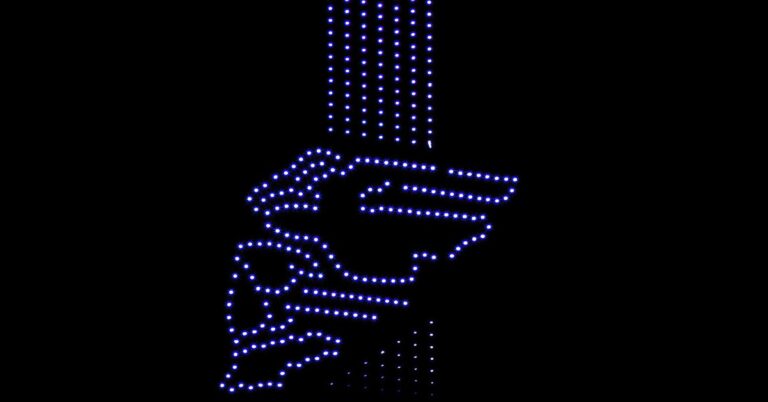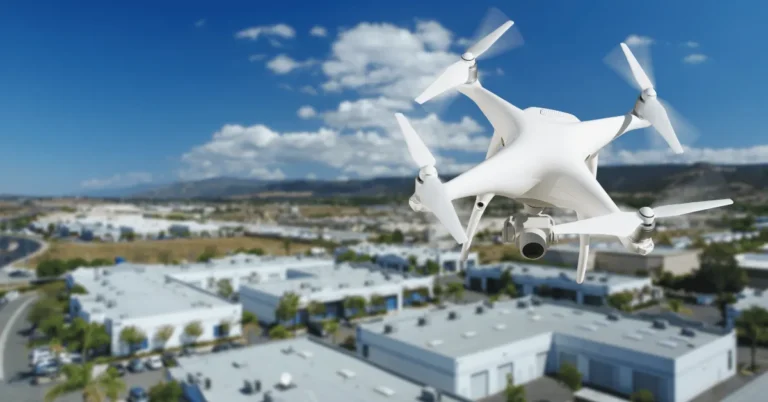Do Skydio Drones Have Geofencing?

Are you a drone enthusiast or a professional drone operator interested in the latest drone technology and regulations? If so, you may have heard of geofencing, a technology that helps drone operators comply with airspace regulations and avoid potential safety hazards.
But what about Skydio drones? Do Skydio Drones Have Geofencing?
This article will examine geofencing and its importance for drone safety and regulations. We’ll explore whether Skydio drones have geofencing capabilities and discuss any unique features or limitations.
We’ll also compare Skydio’s geofencing capabilities to other popular drones manufacturers like DJI and Autel Robotics. By the end of this article, you’ll better understand geofencing technology and how it relates to Skydio drones. So, let’s get started!
What is geofencing, and why is it essential for drone safety and regulations?
Before we dive into Skydio’s geofencing capabilities, let’s first define what geofencing is and why it’s important for drone operators.
Geofencing technology uses GPS or other location-based services to create virtual boundaries in specific locations. These boundaries can restrict drone flight paths, prevent drones from entering restricted airspace, or alert drone operators of potential hazards.
The benefits of geofencing for drone operators and the general public are numerous. Geofencing can help prevent drones from interfering with critical infrastructure, such as airports or power plants, and reduce the risk of collisions with other aircraft or objects.
Additionally, geofencing can aid law enforcement agencies in monitoring drone activity and enforcing airspace regulations.

As drone usage continues to increase, geofencing has become an important tool for ensuring safe and legal drone operations. With that said, let’s look closer at whether Skydio drones are equipped with geofencing capabilities.
Does Skydio offer geofencing capabilities for their drones?
Now that we understand geofencing technology’s importance let’s explore whether Skydio drones have geofencing capabilities.
Skydio is a popular drone manufacturer known for its advanced obstacle avoidance technology and autonomous flight features.
While some of their drones do not have built-in geofencing capabilities, Skydio offers a mobile app called Skydio Flight School that provides geofencing features.
The Skydio Flight School app allows drone operators to set up virtual boundaries around restricted areas, such as airports or national parks, and receive alerts when their drone approaches or enters these areas.
Additionally, the app can set up no-fly zones or pre-defined flight paths to help prevent drone collisions with other aircraft or obstacles.
However, it’s important to note that the Skydio Flight School app is only available for certain Skydio drone models and may provide different geofencing features than other popular drone manufacturers.
Read More: https://skbestgadgets.com/how-to-unlock-geofencing-on-your-dji-drone/

Suppose geofencing is a crucial feature of your drone operations. In that case, it’s important to research the specific model of Skydio drone you’re interested in and consider whether the Skydio Flight School app meets your needs.
While not all Skydio drones have built-in geofencing capabilities, the Skydio Flight School app provides a viable option for drone operators to ensure safe and legal drone operations. In the next section, we’ll compare Skydio’s geofencing capabilities to other popular drone manufacturers.
What geofencing features or limitations do Skydio drones have?
As mentioned earlier, not all Skydio drones have built-in geofencing capabilities. However, the Skydio Flight School app provides some geofencing features for certain Skydio drone models. Let’s take a closer look at these features and their limitations.
READ MORE: Does Mavic 3 have optical zoom?
Virtual Boundaries:
The Skydio Flight School app allows drone operators to set up virtual boundaries around restricted areas using GPS coordinates or by drawing a shape on the map. The app alerts the operator when the drone approaches or enters these boundaries.
No-Fly Zones:
In addition to virtual boundaries, the Skydio Flight School app provides no-fly zones that restrict drone operations in certain areas, such as airports or national parks. These no-fly zones are automatically updated based on the latest airspace regulations.
Pre-Defined Flight Paths:
The Skydio Flight School app also allows drone operators to set up pre-defined flight paths for their drones, helping to prevent collisions with other aircraft or objects. This feature can be especially useful for commercial drone operations, such as aerial surveys or inspections.
While the Skydio Flight School app provides some geofencing features for Skydio drone operators, it’s important to note that there are limitations to these features.
For example, the app may not be able to detect certain hazards or restricted areas that are not included in its database. Additionally, the app may provide a different level of geofencing capabilities than other popular drone manufacturers, such as DJI.

How do Skydio’s geofencing capabilities compare to those of other popular drones manufacturers like DJI and Autel Robotics?
Skydio is just one of many popular drone manufacturers today, each with unique features and capabilities.
Regarding geofencing, two other popular drone manufacturers that come to mind are DJI and Autel Robotics. Let’s look at how Skydio’s geofencing capabilities compare to these manufacturers.
DJI:
DJI is one of the leading drone manufacturers in the world and is known for its extensive range of drones and accessories.
Regarding geofencing, DJI offers a “Geospatial Environment Online” (GEO) feature, which provides real-time information about airspace restrictions and no-fly zones.
DJI drones also have built-in sensors that detect obstacles and automatically adjust flight paths to avoid them.
Autel Robotics:
Autel Robotics is another popular drone manufacturer offering various drones for commercial and consumer use.
Autel Robotics’ geofencing feature is called “Geo-Fencing 2.0,” which allows drone operators to set up virtual boundaries around restricted areas and receive alerts when their drone approaches or enters these areas.
Autel Robotics’ drones are equipped with obstacle avoidance sensors and can detect and avoid obstacles in their flight path.
Compared to DJI and Autel Robotics, Skydio’s geofencing capabilities may be less extensive and comprehensive. While the Skydio Flight School app does provide some geofencing features, it may not have the same level of real-time information or obstacle detection as DJI or Autel Robotics.
However, it’s important to note that Skydio’s drones are known for their advanced obstacle avoidance technology and autonomous flight features, which can be just as important for safe and legal drone operations.
What role does geofencing play in ensuring safe drone operations and adhering to regulations?
Geofencing is important in ensuring safe drone operations and adhering to regulations. With the increasing popularity of drones, drone operators need to understand the rules and regulations surrounding drone use, especially when flying in restricted areas or near airports.
Geofencing technology helps to prevent drone operators from inadvertently flying in restricted areas by creating virtual boundaries around these areas.

By setting up these virtual boundaries, drone operators can receive alerts or warnings when their drone approaches or enters a restricted area, helping them to avoid potential safety hazards or legal consequences.
Geofencing can also help drone operators to adhere to regulations and guidelines set forth by aviation authorities such as the Federal Aviation Administration (FAA) or Civil Aviation Authority (CAA).
For example, the FAA requires all drone operators to fly below 400 feet and within visual line-of-sight and prohibits flying in certain restricted areas such as national parks or near airports.
Using geofencing technology, drone operators can ensure they comply with these regulations and avoid potential fines or legal consequences.
What recent or upcoming changes in drone regulations are related to geofencing?
As the use of drones continues to grow, regulations surrounding drone use are constantly evolving. In recent years, there have been several changes in drone regulations related to geofencing.
One major change in drone regulations related to geofencing is the Federal Aviation Administration’s (FAA) implementation of Remote Identification (RID) requirements for drones.
The RID requirements mandate that drones broadcast their location and identification information in real-time, allowing for easier tracking and monitoring of drones in the airspace.
This new requirement is closely tied to geofencing technology, as it will allow for more accurate and effective geofencing of restricted areas.
READ MORE: How far and high can DJI Air 2s fly?
Additionally, the FAA recently announced its intention to expand the use of geofencing technology for drones.
The agency has proposed a rule requiring certain drones to be equipped with geofencing technology to prevent them from flying in restricted areas without authorization. This rule is expected to increase safety and reduce the risk of drone-related incidents.
Other upcoming changes related to geofencing and drone regulations include increased enforcement of existing rules and regulations and the potential for new regulations related to privacy concerns and the use of drones in certain areas.
As regulations evolve, drone operators must stay informed and up-to-date on the latest requirements and guidelines.

Important FAQs
What are some common penalties for violating geofencing regulations?
Understanding and complying with all geofencing regulations is important to avoid these consequences.
Are there any exemptions or special permissions for flying drones in restricted areas?
However, these exemptions are usually granted on a case-by-case basis and require specific authorization from the relevant authorities.
What should I do if my drone crashes in a restricted area?
How do drone regulations and geofencing technology differ between countries?
Some countries may have stricter regulations or more comprehensive geofencing databases, while others may have more relaxed rules for drone operations.
Final Thoughts
Geofencing technology is a crucial tool for ensuring safe and responsible drone operations.
With the increasing popularity of drones, it’s more important than ever for drone operators to understand the rules and regulations surrounding drone use, especially when flying in restricted areas.
Skydio drones have implemented geofencing technology to help drone operators fly more safely and responsibly and avoid potential safety hazards or legal consequences.
By setting up virtual boundaries around restricted areas, Skydio drones can alert operators when their drone is approaching or entering a restricted area, helping them to avoid potential problems.
It’s important to note that geofencing technology is not foolproof, and drone operators should always exercise caution and common sense when flying their drones.
Additionally, as drone use regulations continue to evolve, drone operators must stay informed and comply with all rules and guidelines related to geofencing and drone use.
Want to Understand More:
How to Get a Drone License in Texas?
Want to fly your drone for commercial purposes in Texas? You need to get a drone license from the FAA. In this article, I’ll explain the steps involved in getting a drone license in Texas.
Click here to read the full article and learn how to get your drone license in Texas.







